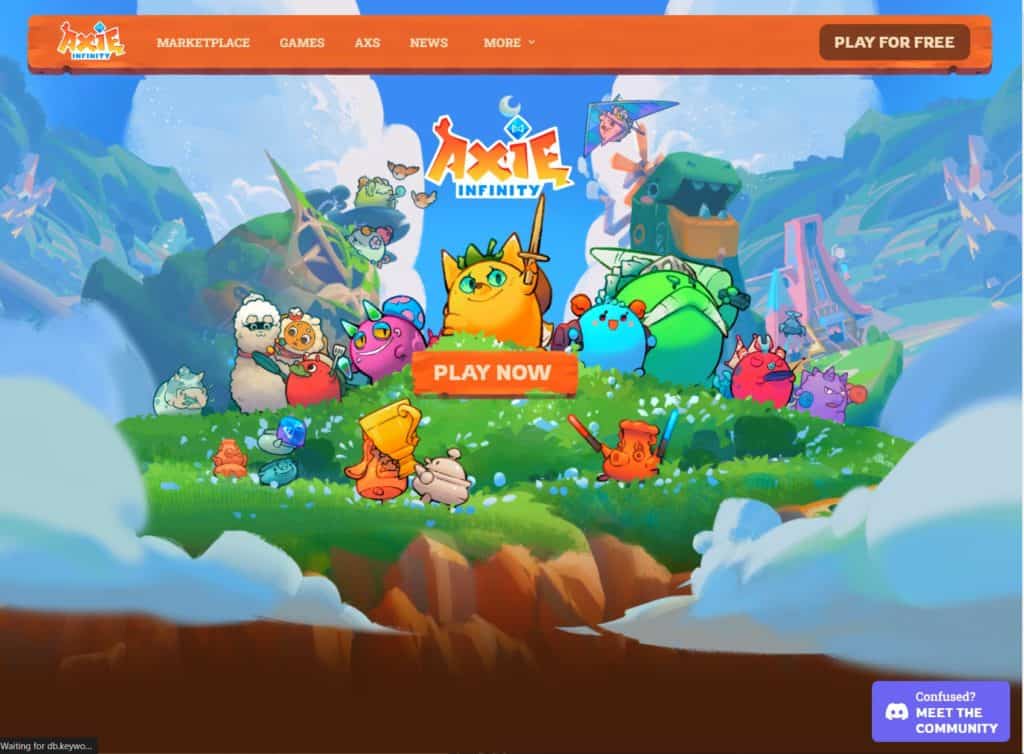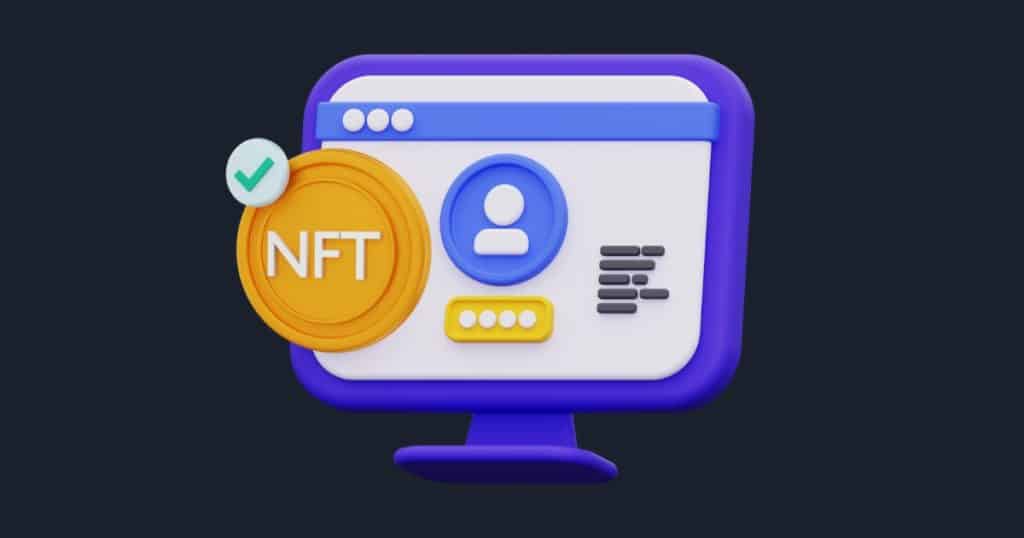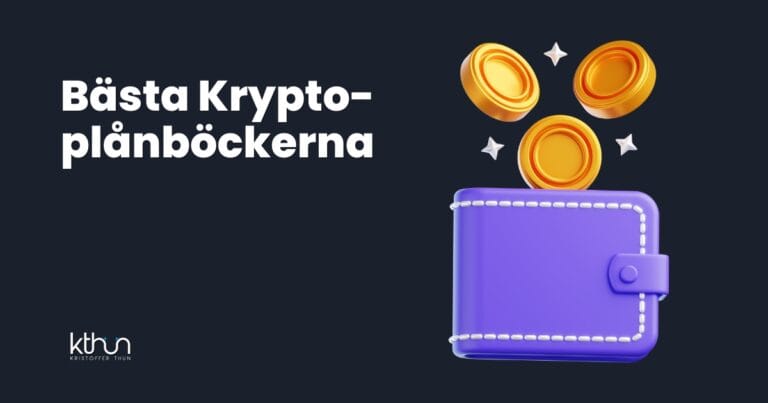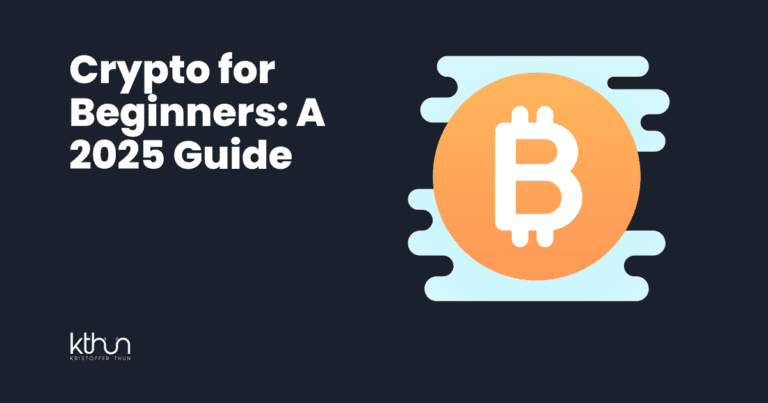Are you interested in how NFTs can be used in different areas of life?
Whether showing off your digital art or helping in healthcare, Non-Fungible Tokens (NFTs) have many cool uses in our daily lives.
In this blog post, we’ll examine some cool ways NFTs are being used and see how they’re improving things. We’ll discuss everything from music to confirming who you are and explain why these tokens matter.
So, let’s dig in and find out about the awesome things NFTs can do!
I partner with amazing companies that offer products that help my readers achieve their goals! If you buy through my affiliate links, I get paid for the referral at no extra cost! For more information, feel free to visit my disclosure page.
What is an NFT?

NFTs are special online certificates that show you own something digital, like pictures or services.
They’re a bit like digital money, but instead of just saying you have money, they let you fully control a specific digital thing.
Using NFTs makes it easy and not too expensive to show ownership of real things on the internet. They also offer businesses a speedy way to gather money.
NFT Use Cases
Here are the most popular NFT use cases:
1. NFT In-Game Assets

Digital assets, Non-Fungible Tokens (NFTs), represent individual items or collectibles. These NFTs are secured and tracked on the blockchain, a distributed ledger system confirming digital object ownership.
Unlike regular money such as Bitcoin or Ethereum, you can’t trade NFTs for other tokens with the same value. Each NFT is special and can’t be swapped for something else.
This makes them great for use in games.
How are NFTs Used in Gaming?
Recently, game makers are using NFTs to create a digital world where players can buy and swap special game stuff, like armor sets, avatars, skins, virtual land, weapons, and more.
These things are kept safe on the blockchain and can only be traded between players using smart contracts, which makes sure everyone is treated fairly.
Some games also have features that encourage players to keep playing by giving them rewards when they reach certain levels or finish specific tasks.

Game creators can use NFTs in video games to make certain things super rare.
This makes players want those special items, and it gives them a chance to make money by using their skills in the game.
And here’s the cool part: these valuable items are kept safe on the blockchain, which makes it much harder for bad guys to trick the system. Every transaction has to go through a special contract to make sure it’s legit.
Plus, this technology lets players trade stuff between different games. It’s like a big change in how we can have fun playing video games.
NFTs are changing the game world by letting players own and trade digital content, which helps game creators make some money.
Key Takeaway
NFTs are digital assets on the blockchain, enabling gamers to trade rare items securely. This technology provides:
– True scarcity models.
– Additional security against fraud.
– New ways for users to monetize their skills within virtual worlds – all of which could potentially revolutionize gaming as we know it.
2. NFT in Music

How are NFTs Used in Music?
Many musicians use NFTs to make money from their music without relying on streaming services or record labels.
By turning their albums or singles into NFTs, artists can give fans special access to their music and get paid directly by buyers. This way, they don’t have to share their earnings with middlemen.
Musicians can make more money by making limited versions of their songs, which they sell through auctions using blockchain technology.
This method brings in more money compared to the usual ways of selling music.
The Benefits of NFT in Music
NFTs, or special digital tokens, have greatly benefited the music world. They’ve changed how musicians connect with fans and make money.
Here are the important pluses of NFTs in music:
- Direct Chat with Fans: NFTs let musicians talk straight to their fans. No need for middlemen or big platforms. This helps artists make more money and get closer to their fans.
- Proof of Who Owns What: NFTs make a solid record that shows who owns digital content like songs and videos. This prevents problems like stealing and ensures creators get paid right.
- Power for Artists: NFTs let artists keep control of their work. This means musicians get a fair share in the music business, moving away from old-fashioned structures.
- Royalties and Money: With NFTs, artists make money when they sell something first and when others sell it later. This keeps a steady flow of money as their work moves around in the NFT world.
- Cool Ways to Make Money: Music NFTs let artists earn money in new ways. They can sell special songs or albums and offer cool experiences like virtual concerts or backstage. This gives fans something unique and special.
- Building a Fan Group: NFTs help make community groups on decentralized platforms. This builds special fan bases around artists and makes a fairer way for everyone in the music business to succeed.
Key Takeaway
Non-Fungible Tokens (NFTs) provide musicians with a means to monetize their craft without depending on streaming services or record labels, granting them authority over the amount of money they earn from each sale and an opportunity to generate rarity around their music.
With NFTs, fans can gain exclusive access to digital content, while artists directly communicate with them via smart contracts built into the tokens.
3. NFT in Art

NFT And Digital Art
Many artists are into using NFTs to show off their art and make more money.
They do this by using special computer contracts on the internet called smart contracts. These contracts help them make unique tokens (NFT art) for their art so they can prove it’s really theirs and make more money from it.
When someone buys their art, they become the official owner of the original digital artwork. They can even show off a digital version of the art at home or online or trade it with other art fans without having to physically give anything.
This tech not only helps artists make more money but also makes it harder for people to copy and fake their art.
The special codes used to make these tokens are tricky to copy, making them more secure for artists and their work.
Creating NFTs
Making an NFT, like showcasing art on the blockchain, can be quite technical and complex.
Nonetheless, there are plenty of user-friendly services that artists can avail of these days, making it easy to create one-of-a-kind tokenized artworks without any coding expertise.
With the right services, you can use powerful tools to craft your own NFT artwork and digital collectibles with extra value derived from meta-data. Then, safe platforms allow users to store and swap these tokens between collectors.
And if more convenience is needed, NFT generators are now available that quickly produce your art into an NFT token so you can sell it through on-chain or off-chain outlets!
NFTs make it easy for art buyers to purchase your work without prior knowledge of crypto or blockchain. All they need is a secure wallet address to transfer funds through Ethereum’s smart contracts.
Additionally, thanks to these tokens being stored publicly on the blockchain ledger, anyone who holds one will always know what it represents – making them perfect for trading amongst collectors.
Trade your NFTs easily on the leading marketplaces, including OpenSea and Rarible. Whether you are looking to buy or sell, these platforms provide an array of options that suit all needs!
Finally, giving artists control over how much each piece costs at any time allows them greater flexibility when pricing out works compared to traditional methods like galleries or auction houses, where fees may apply after sale completion.
NFTs have revolutionized the way art is created, shared, and sold. With their potential for identity verification, they offer a secure alternative to traditional authentication methods.
Key Takeaway
NFTs are a pioneering digital property form that empowers creators to safeguard and monetize their distinctive artwork on the blockchain. With NFTs, creators have greater control over pricing than traditional methods such as galleries or auction houses.
At the same time, buyers benefit from secure transactions with no prior knowledge of cryptocurrency or blockchain technology needed.
4. NFT in Identity Verification

NFTs have proven to be a reliable solution for securely storing and verifying sensitive information, including identity documents.
The blockchain-based mechanism ensures secure storage while maintaining privacy by preventing malicious actors from accessing the ledger’s information.
How are NFTs Used for Identity Verification?
NFTs enable online verification of user identities without requiring access to private data, ensuring that companies can secure accounts and services while safeguarding individual privacy.
By using this technology, businesses can guarantee that only authenticated users can access certain accounts or services while preserving user confidentiality simultaneously.
For example, some banks now allow customers to create an account using only their phone number linked with an associated NFT token instead of providing additional information like name and address.
The main benefit of NFTS has increased security since users do not require personal information to verify their identity online.
Additionally, it helps reduce fraud by ensuring that only legitimate users can access certain accounts or services since each token has its unique code attached, which cannot be replicated easily.
Furthermore, it eliminates manual processes such as filling out forms manually by streamlining the process through automated systems powered by smart contracts enabled by these tokens making it faster than ever.
NFTs offer a secure and reliable way to verify identities, providing users with an extra layer of protection.
Beyond authentication, NFTs can also be implemented to make collectables more accessible. To learn more about this potential utilization of NFTs, let’s delve deeper into the topic in our next segment.
Key Takeaway
NFTs provide a reliable and secure method of verifying user identities online, thus providing companies with an invaluable tool for safeguarding customer data. NFTs provide a comprehensive solution for verifying user identities in the digital age, thanks to their smart contract-enabled security and streamlined processes.
5. NFT Digital Collectibles
NFTs, or Non-Fungible Tokens, are digital assets on a blockchain. They represent anything from artwork to collectibles, sports, and real-world assets. Unlike traditional cryptocurrencies like Bitcoin, NFTs have unique attributes which make them one of a kind – just like the items they represent.
As such, each NFT is assigned the cryptographic code that makes it verifiable and immutable on the blockchain. No two NFTs can be identical; they’re unique and non-interchangeable with any other token.
How Are NFTS Used for Collectibles?
NFTs are being used more than ever in the world of collectibles due to their ability to prove ownership and authenticity of an item without relying on third parties or physical objects as proof.
A growing trend among sports card collectors is the use of NFTs as a replacement for traditional paper cards. These digital tokens provide proof of ownership and prevent counterfeiting or duplication. Additionally, rarity levels set by card issuers create a sense of collectability.
Similarly, art collectors have begun using NFTs to purchase digital artwork online since it eliminates doubts about provenance or authenticity – which was previously tricky when dealing with digital works alone.
Benefits Of Using NFTS For Collectibles
Thanks to blockchain technology, buyers are given the privilege of total openness and control. This allows them to confirm their purchases’ authenticity and transfer it speedily between wallets.
Not only are Non-Fungible Tokens incredibly valuable, but they’re also immune to destruction. Since the tokens are securely stored on a blockchain system, your prized collections will never be vulnerable to physical damage or theft.
With NFTs, you can rest easy knowing that your assets remain safe and sound!
Key Takeaway
NFTs provide unprecedented security and assurance for collectors, as they are cryptographically unique and immutable on the blockchain. This eliminates any risk associated with counterfeiting or duplication while giving a sense of collectability through rarity levels set by issuers.
In short, NFTs offer unparalleled peace of mind to those who invest in collectables – allowing them to rest easy knowing that their items will remain safe from fraudsters.
6. NFT Healthcare
NFTs (Non-Fungible Tokens) provide a revolutionary way to securely store data and transact across various industries. As it grows in popularity within the healthcare sector, NFTs offer numerous advantages for care providers and patients.
How Are NFTS Used In Healthcare?
NFTs present exciting possibilities for healthcare applications, from medical records management and drug supply chain tracking systems to many other potential uses.
For example, hospitals could use NFTs to securely store patient records while ensuring the data’s integrity by preventing tampering or unauthorized access.
Additionally, pharmaceutical companies could use NFTs to track drugs throughout their entire supply chain process, from manufacturing through distribution until it reaches their destination – this would help reduce counterfeiting and ensure quality control measures are met along the way.
The benefit of using NFTs in Healthcare
NFTs offer better security than traditional methods in healthcare due to their uniqueness and immutability.
Additionally, since all data stored on an NFT is encrypted, costly storage solutions like servers are unnecessary, thus reducing costs associated with managing sensitive information.
Finally, blockchain technology allows faster processing times than other methods, meaning patients can access essential health services quicker without sacrificing security standards.
The use of NFTS in healthcare provides an efficient, secure way to manage patient data and streamline the delivery of medical services. Let’s now investigate the advantages of using NFTS for ticketing.
Key Takeaway
NFTs are increasingly in demand due to their potential for safeguarding digital assets, including health documents and drug supply chain information. Utilizing blockchain technology and encryption techniques, NFTs provide a secure way of managing sensitive information without sacrificing processing speed or security standards.
7. NFTs In Tickets
Non-Fungible Tokens (NFTs) are digital representations of ownership for unique items, which cannot be replaced or exchanged like cryptocurrency.
NFTs are not interchangeable like crypto, but instead, they possess an individualized uniqueness that any other token can’t replicate. NFTs can store data, verify ownership, and track the provenance of items such as artwork, collectibles, tickets for events or travel, etc.
How Are NFTS Used For Tickets?
NFTs in ticketing enhance security and efficiency. Smart contracts prevent fraud and scalping by controlling access rights stored on a blockchain ledger.
Additionally, it allows customers to quickly transfer tickets without needing third-party intermediaries such as Ticketmaster or StubHub since all transactions occur directly between buyers and sellers within the system.
Key Takeaway
Non-Fungible Tokens (NFTs) provide a secure and efficient way to manage ticketing operations, preventing fraud and scalping by using smart contracts that control access rights stored on an immutable ledger. NFTs allow customers to ‘cut out the middleman’ when transferring tickets between buyers and sellers within the system.
FAQ
1. What are some common NFT use cases?
NFTs (non-fungible tokens) are becoming increasingly popular for various uses. While the concept is relatively new, it has already proven powerful. NFTs can be used for numerous applications, from art and collectibles to digital gaming.
2. How can I create NFT?
To create an NFT (non-fungible token), you will need to follow these steps:
Choose a blockchain platform: Ethereum is currently the most sought-after platform to create NFTs, yet other alternatives like Binance Smart Chain and Flow are also available.
Set up a wallet: To securely store and keep track of your NFTs, you will need a digital wallet specifically designed to work with the blockchain platform of your choice.
Create your artwork or content: From digital art to blog posts and tweets, create something unique, incomparable and that people would love to possess.
Mint your NFT: When you are all set with your artwork or content, you can launch an NFT marketplace like OpenSea or Rarible and mint your NFT. This involves launching a smart contract that confirms the credibility of your tokenized asset on the blockchain.
List your NFT for sale: After minting your NFT, you can list it on an NFT marketplace where collectors can purchase it using cryptocurrency.
Creating an NFT involves technical knowledge of blockchain technology and cryptocurrency transactions, which may only suit some.
3. What are the benefits of using an NFT?
There are several benefits of using an NFT (non-fungible token), including:
Proof of ownership: NFTs provide a unique digital identity that proves ownership and authenticity of a particular asset, whether it’s a piece of art, music, or any other digital content.
Traceability: Transactions involving NFTs are recorded on the blockchain, creating a transparent and traceable history of ownership and provenance.
Control over distribution: Creators can set rules around how their NFTs are distributed and sold, allowing them to maintain control over their work and earn royalties through secondary sales.
Scarcity: Because each NFT is unique and cannot be replicated, it creates scarcity in the market, which can drive up demand and value for collectors.
Accessibility: NFTs provide creators with new ways to monetize their work without relying on traditional gatekeepers like galleries or record labels, making it more accessible for anyone to enter the market.
Overall, NFTs provide a new way for artists and creators to monetize their work while providing collectors a unique ownership experience beyond physical art or collectibles.
4. Are there any risks associated with using NFTs?
Yes, there are some risks associated with using NFTs (non-fungible tokens), including:
Volatility: Like other cryptocurrencies, the value of NFTs can be highly volatile and subject to rapid price fluctuations.
High transaction fees: The cost of creating and transferring NFTs can be high due to the fees associated with blockchain transactions.
Technical challenges: Creating and managing NFTs requires technical knowledge of blockchain technology and cryptocurrency transactions, which may be a barrier for some users.
Lack of regulation: The market for NFTs is currently unregulated, making it difficult to protect against fraud or ensure fair practices.
Environmental impact: The energy consumption required to maintain blockchain networks can have a significant environmental effect, raising concerns about the sustainability of NFTs.
It’s essential to consider these risks before investing in or creating NFTs carefully and to research the specific platforms and marketplaces you’re considering using.
Wrap Up
To sum up, NFTs offer a plethora of opportunities across multiple industries.
The potential applications of this revolutionary technology are limitless, spanning across various industries, including gaming, fashion, music, art, identity verification, collectibles, healthcare, tickets, and insurance memberships.
We have only scratched the surface!
The decentralized nature of NFTs is gaining popularity among businesses as they offer trustless transactions with heightened security. This has become a new way for businesses to engage customers and create unique experiences.
As more organizations explore the possibilities of using NFT use cases, we expect them to become an integral part of our lives shortly.






